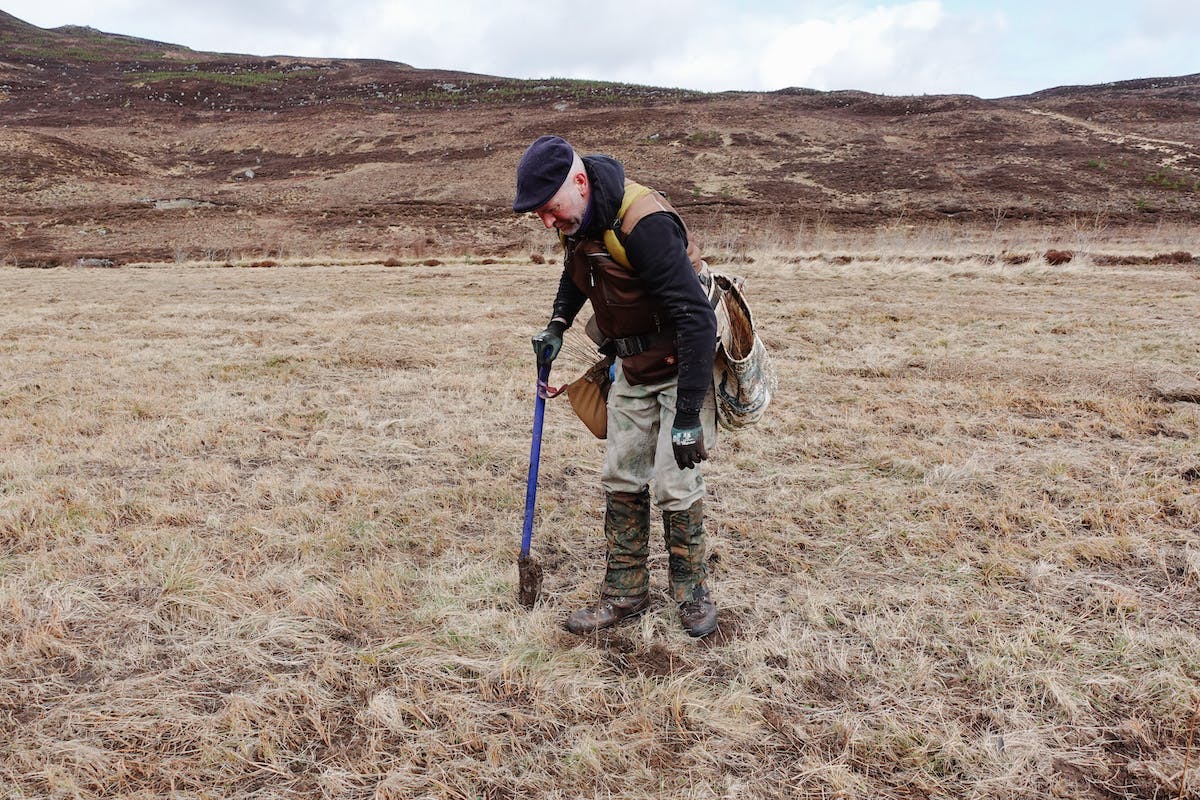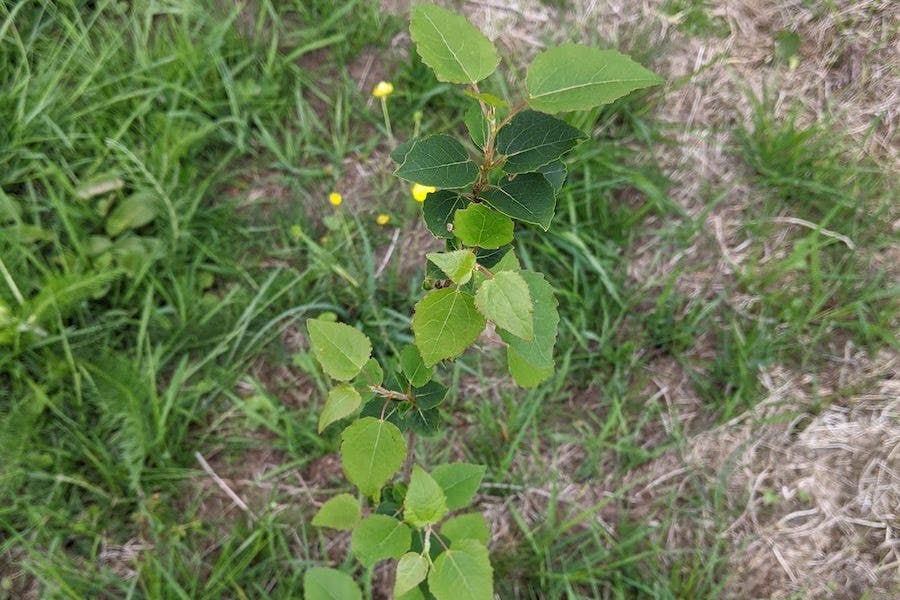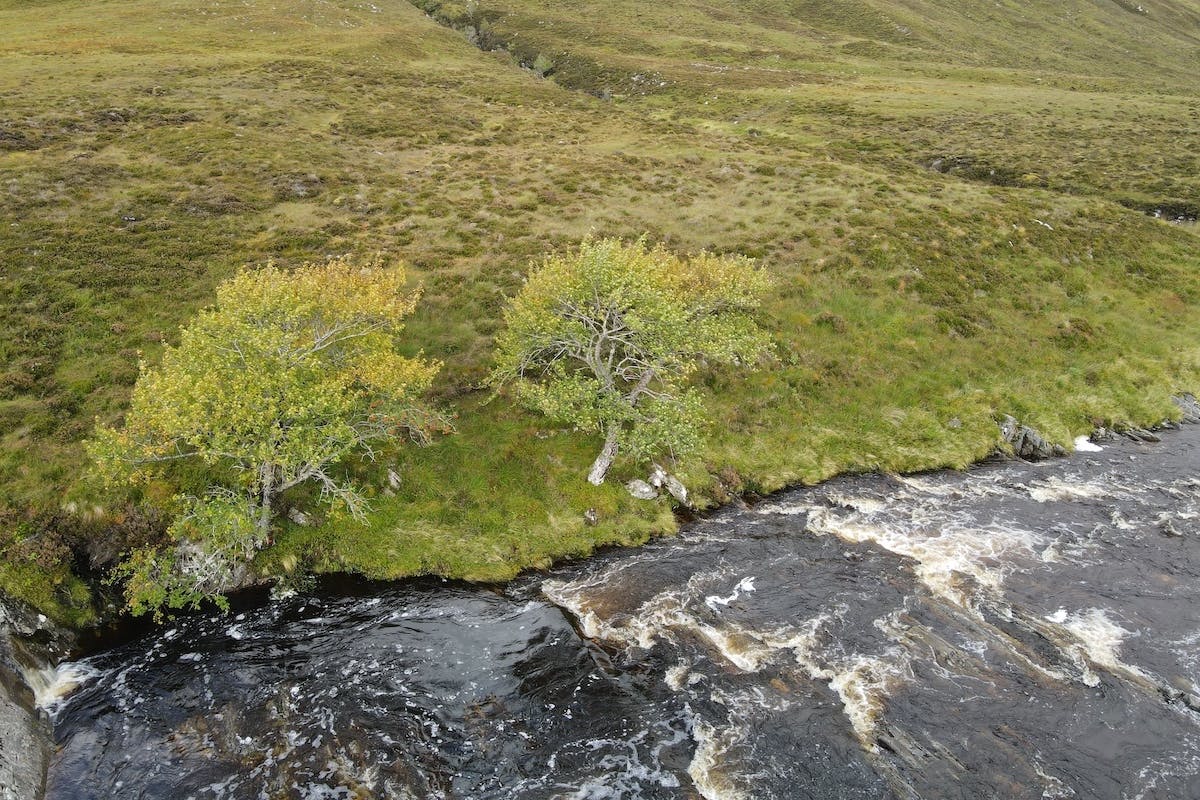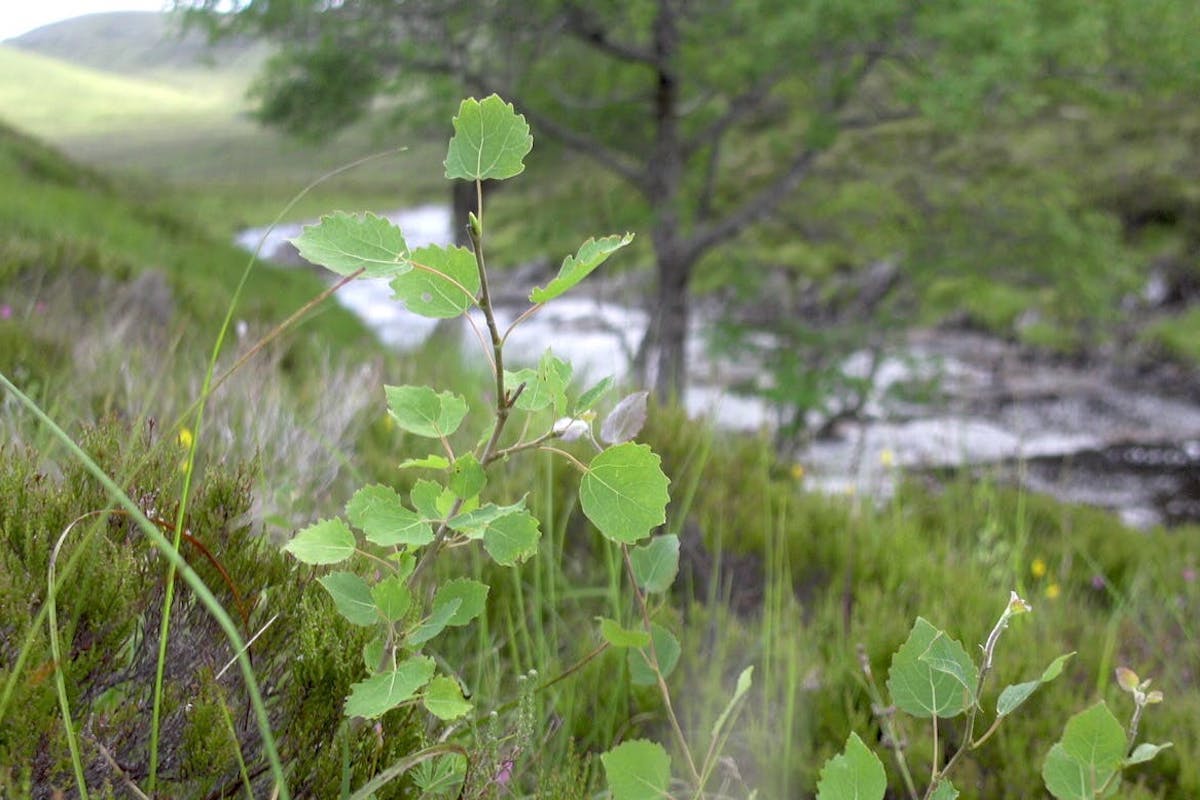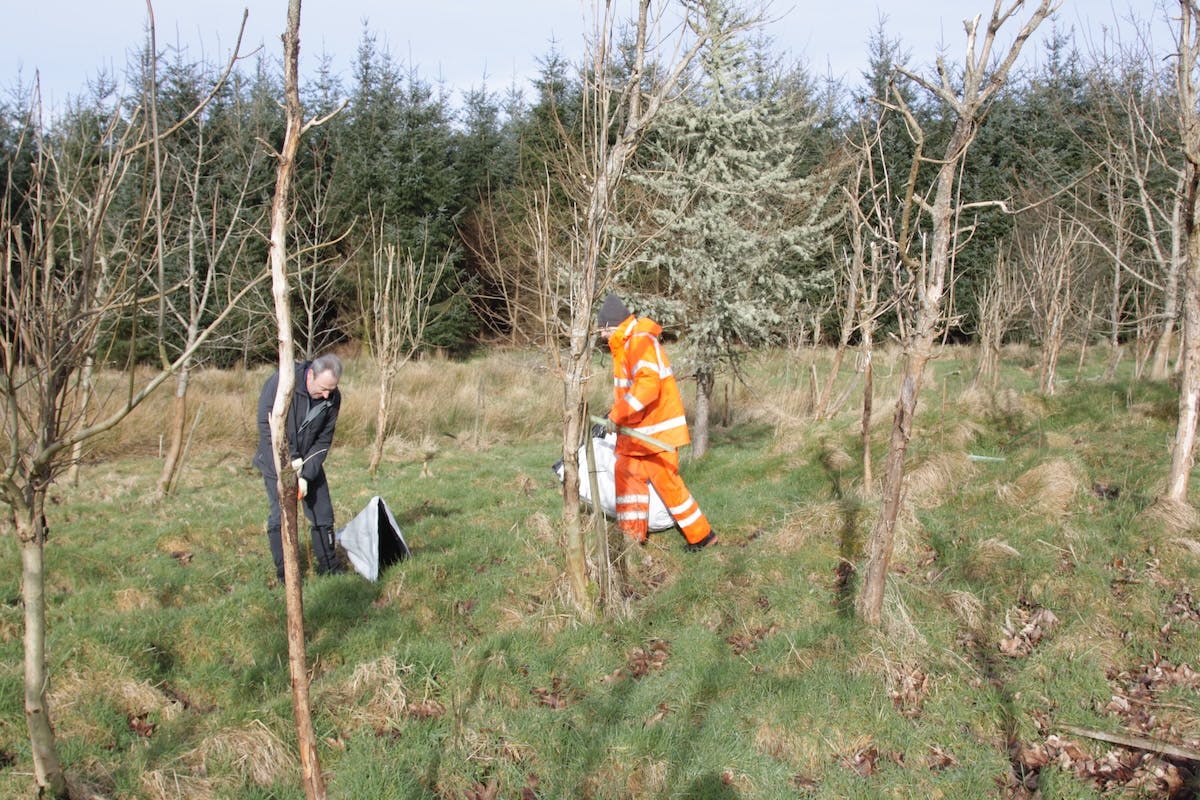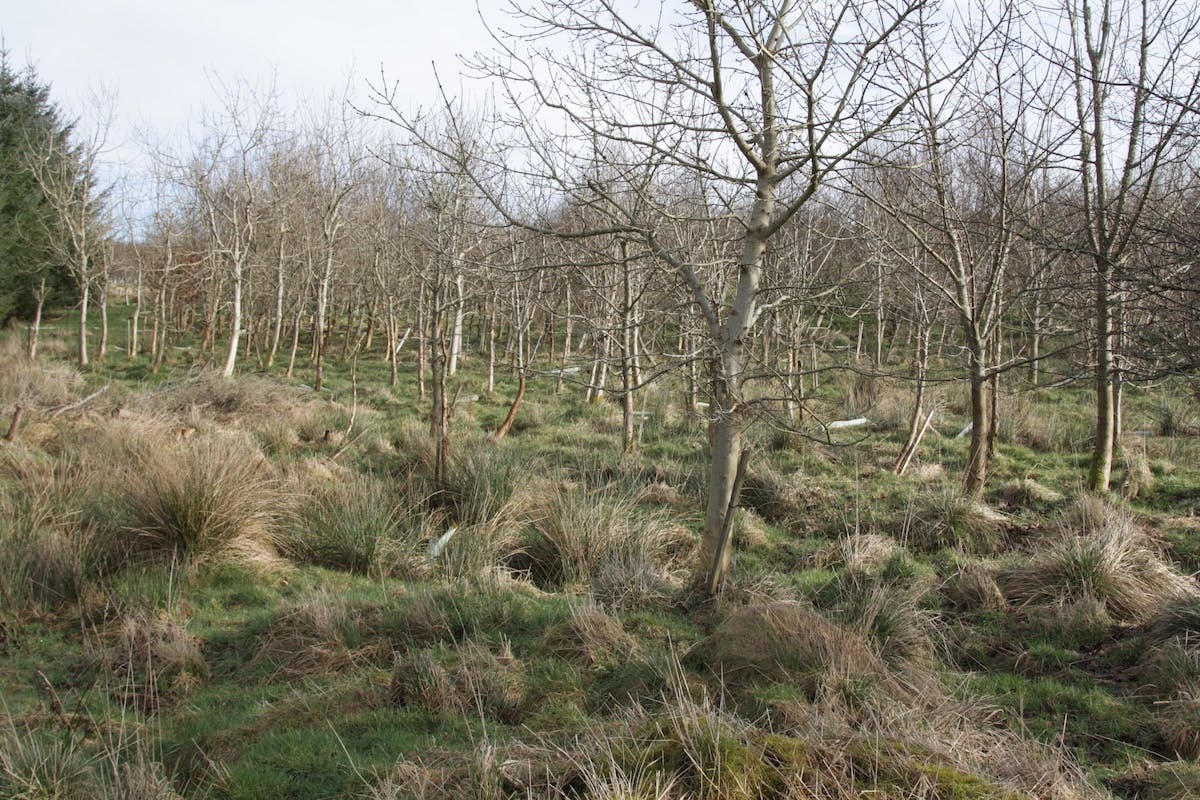- Trees planted: 9,450
- Status: In Progress
Eurasian aspen (Populus tremula) is a keystone species that is largely missing from Scottish woodlands today. In Europe, its often found alongside birch, rowan, willow, and alder in the broadleaf component of northern coniferous forests. Together, they can occupy around 15-20% of the forest. In Scotland, aspen mostly exists as small, isolated fragments often consisting of single relict trees. To restore the natural diversity of the native pinewoods and return aspen to the landscape, we are embarking on a long-term project to plant and support the natural regeneration of aspen trees in Scotland.
Project Timeline
January -May 2025
Aspen planting at two woodland sites in Ayrshire. This includes the planting of 810 at North Hourat and 2,000 aspen at Comraich involving a group of young people being trained in outdoor skills and other volunteers as part of a local government scheme. At Locherwood Community Woodland, 100 bramble cuttings were planted around some of the previously planted aspen to help with deer deterrent.
Autumn 2024
Providing support for Eadha Enterprises in micropropagation and nursery expansion. The former takes aspen clones and stimulates different growth phases of root and shoot development of saplings. For the latter, we've funded materials and contractors required to expand Eadha Enterprise's current nursery footprint.
The Intervention
Beginning in Spring 2021, we are launching an ambitious project to plant and protect 10,000 aspen trees over the next 5 years. We are planting open areas with trees grown in nurseries and trialling different techniques to protect naturally regenerating aspen from deer browsing e.g. planting thorny shrubs.
We will focus our efforts in riparian areas where aspen play an important role in stabilising the river bank, creating shade and providing nutrients in the form of leaf fall. In doing so, we will help sequester carbon, create important woodland habitat and improve the health of Scotland's rivers.
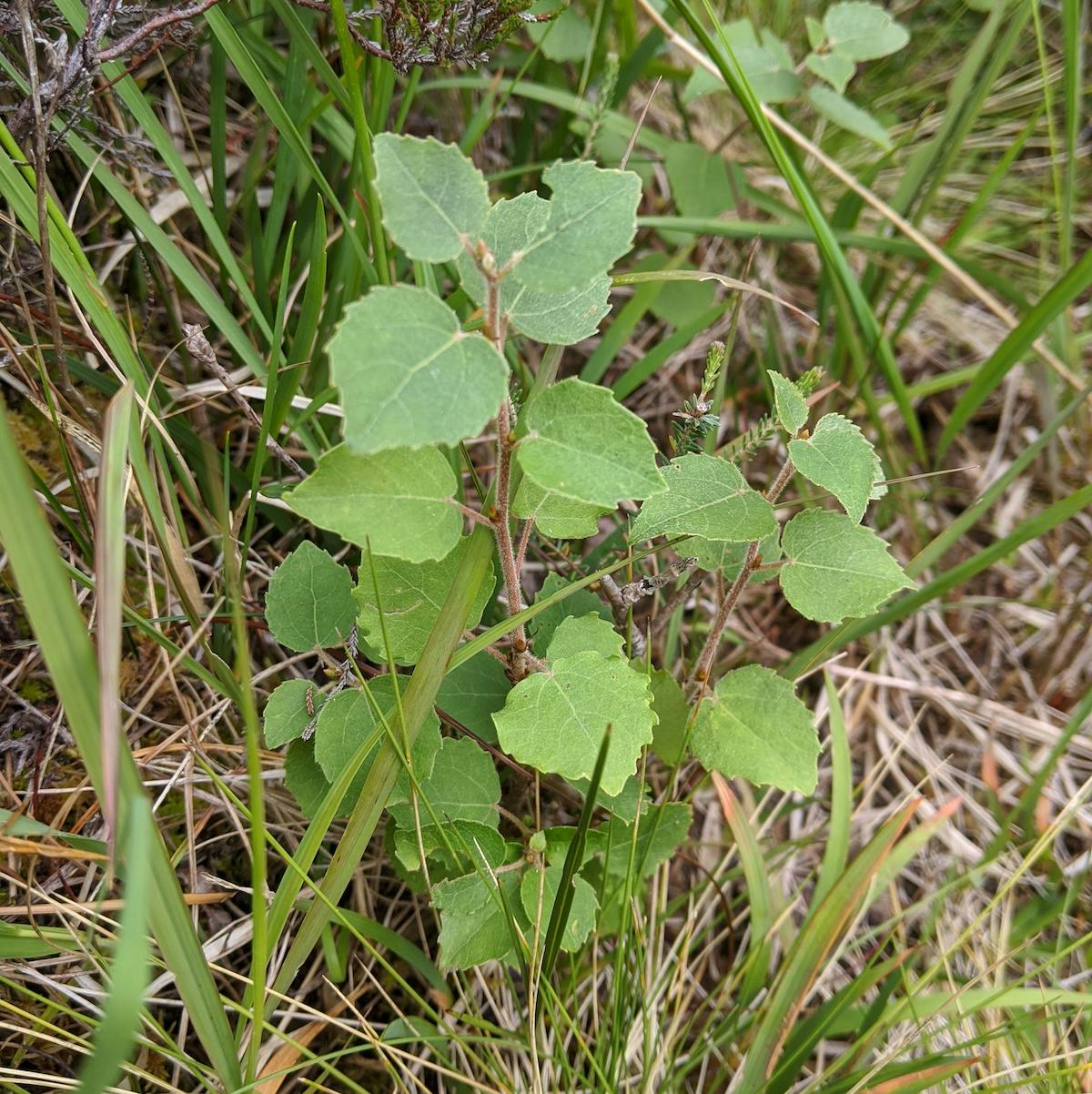

Gallery
A collection of photos from our Restoring Aspen project
Learn More About the Context Behind this Project
Why is this Species Important?
Aspen is considered to be a keystone species because of its ecological importance for other species. It provides vital habitat for a number of invertebrates, including aspen hoverfly (Hammerschmidtia ferruginea), an endangered species in the UK, as well as a diversity of lichen and bryophytes. Aspen is an important source of food for wildlife like, the Eurasian beaver (Castor fiber), and provides important nesting sites for several species of hole nesting birds, including various species of woodpeckers. In Europe, aspen stands have been shown to be used by capercaillie (Tetrao urogallus), another endangered species in Britain and of great conservation concern.

Why Do They Need Protecting?
Historical management of Scotland’s woodlands for timber meant that non-useful trees, like aspen, were removed. This, coupled with the fact that aspen is one of the most palatable trees to deer and other herbivores, has reduced aspen in Scotland to small isolated fragments. High densities of deer are now limiting the regeneration and return of aspen to the Scottish landscape. Aspen also rarely produces seeds in Scotland, reproducing mainly by new shoots, called ramets or suckers, growing directly from the root systems of mature trees. As a result, once aspen is removed from a site, it is very slow to colonise.
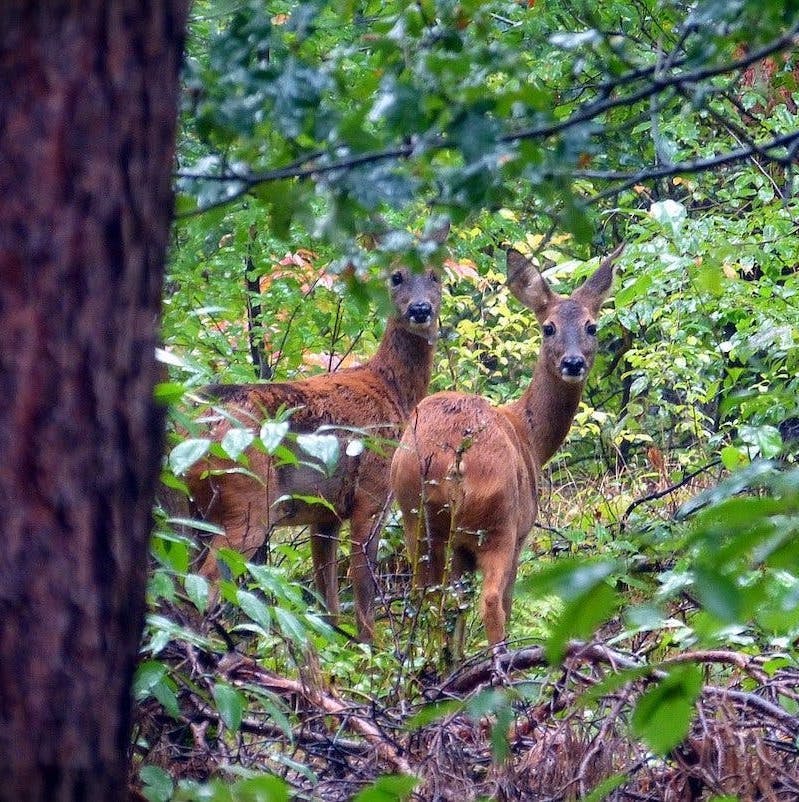
Learn more background to this project in the video below
Sources & further reading

- “The Biodiversity and Management of Aspen Woodlands” - Cairngorms
- “European aspen ( Populus tremula L.): a review with particular reference to Scotland I. Distribution, ecology and genetic variation” - Forestry
